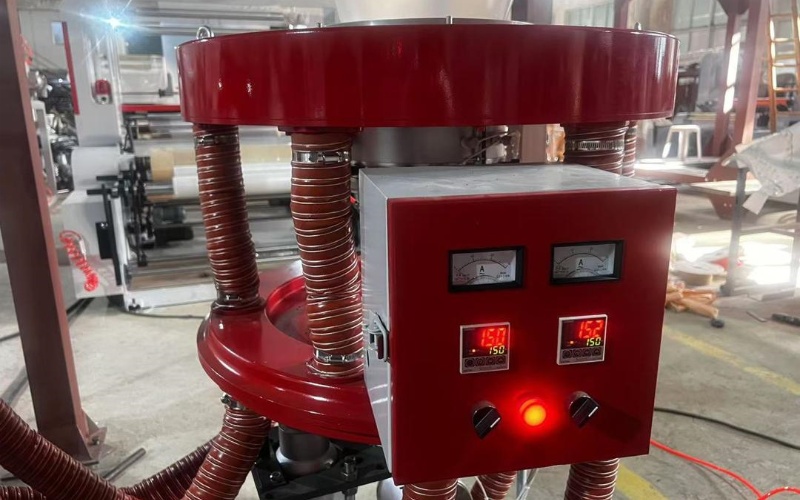
Film blowing is a widely adopted manufacturing process in the plastics industry. It involves the extrusion of molten plastic through a circular die, followed by air inflation to form a thin, continuous film. This process is critical for producing various plastic films used in packaging, agriculture, and other industries. The advantages of film blowing are numerous, ranging from cost-effectiveness to versatility in product applications.
For factories, distributors, and channel partners, understanding the advantages of film blowing is essential for making informed decisions about investing in machinery such as a film blowing machine. This article will explore the key benefits of film blowing, focusing on its efficiency, material flexibility, and environmental impact. Additionally, we will examine the role of advanced technologies in enhancing the performance of blown film machines and how they cater to the growing demand for high-quality plastic films.
Cost-Effectiveness of Film Blowing
One of the primary advantages of film blowing is its cost-effectiveness. The process allows manufacturers to produce large quantities of plastic films at a relatively low cost. This is particularly important for industries that require high-volume production, such as packaging and agriculture.
Film blowing machines, like those available from Xingpai Machinery, are designed to optimize material usage and reduce waste. By controlling the thickness of the film, manufacturers can minimize material costs while maintaining product quality. This level of precision is crucial for industries that need to balance cost with performance.
Material Efficiency
Film blowing is highly efficient in terms of material usage. The process involves stretching the molten plastic into a thin film, which maximizes the surface area of the material. This means that less raw material is needed to produce a given amount of film, resulting in significant cost savings for manufacturers.
Additionally, modern film blown machines are equipped with advanced controls that allow for precise adjustments to the film thickness and width. This level of control ensures that manufacturers can produce films that meet specific requirements without wasting material.
Reduced Energy Consumption
Another cost-related advantage of film blowing is its relatively low energy consumption. The process requires less energy compared to other plastic manufacturing methods, such as injection molding or thermoforming. This is because the film blowing process involves continuous extrusion, which is more energy-efficient than batch processing methods.
Versatility in Applications
Film blowing is a versatile process that can be used to produce a wide range of plastic films for various applications. These films are used in industries such as packaging, agriculture, construction, and medical supplies. The versatility of film blowing makes it an attractive option for manufacturers looking to serve multiple markets with a single production process.
Packaging Industry
In the packaging industry, film blowing is used to produce films for products such as plastic bags, shrink wrap, and food packaging. The ability to produce films with different thicknesses and properties makes film blowing ideal for creating customized packaging solutions. For example, films can be made with varying levels of transparency, strength, and barrier properties to meet the specific needs of different products.
Moreover, the use of co-extrusion technology in modern film blowing machines allows manufacturers to produce multi-layer films with enhanced properties. These films are often used in food packaging to provide better protection against moisture, oxygen, and other contaminants.
Agricultural Films
Film blowing is also widely used in the agriculture industry to produce films for applications such as greenhouse covers, mulch films, and silage wraps. These films help protect crops from environmental factors such as UV radiation, wind, and pests. The ability to produce films with specific properties, such as UV resistance or biodegradability, makes film blowing an essential process for agricultural applications.
For instance, biodegradable films produced using advanced film blowing machines are becoming increasingly popular in agriculture. These films break down naturally over time, reducing the environmental impact of plastic waste in agricultural settings.
Environmental Impact and Sustainability
As environmental concerns continue to grow, the film blowing industry is evolving to meet the demand for more sustainable solutions. One of the key advantages of film blowing is its ability to produce thinner films without compromising strength or durability. This reduces the amount of plastic used in products, which in turn reduces waste and the overall environmental footprint of plastic production.
Biodegradable and Recyclable Films
The development of biodegradable and recyclable films is a significant advancement in the film blowing industry. These films are designed to break down more easily in the environment or be recycled into new products. This is particularly important for industries such as agriculture and packaging, where plastic waste has traditionally been a major concern.
Film blowing machines, such as the single-layer PE film blowing machine, are now capable of producing films that meet strict environmental standards. These machines can produce films made from biodegradable materials, such as polylactic acid (PLA), which decompose naturally over time.
Energy-Efficient Production
In addition to producing more sustainable films, the film blowing process itself is becoming more energy-efficient. Advances in machine design and control systems have led to significant reductions in energy consumption during the film blowing process. This not only lowers the environmental impact of film production but also reduces operating costs for manufacturers.
For example, modern film blowing machines are equipped with energy-saving features such as variable speed drives and optimized heating systems. These technologies help reduce the amount of energy required to produce high-quality films, making the process more sustainable.
Conclusion
In conclusion, film blowing offers numerous advantages. Its cost-effectiveness, material efficiency, and versatility make it an ideal choice for producing a wide range of plastic films. Additionally, the environmental benefits of film blowing, such as the ability to produce biodegradable and recyclable films, are becoming increasingly important in today's market.
By investing in advanced film blown machines, companies can take advantage of these benefits while also reducing their environmental impact. As the demand for high-quality, sustainable plastic films continues to grow, the film blowing industry is well-positioned to meet the needs of a wide range of industries.















